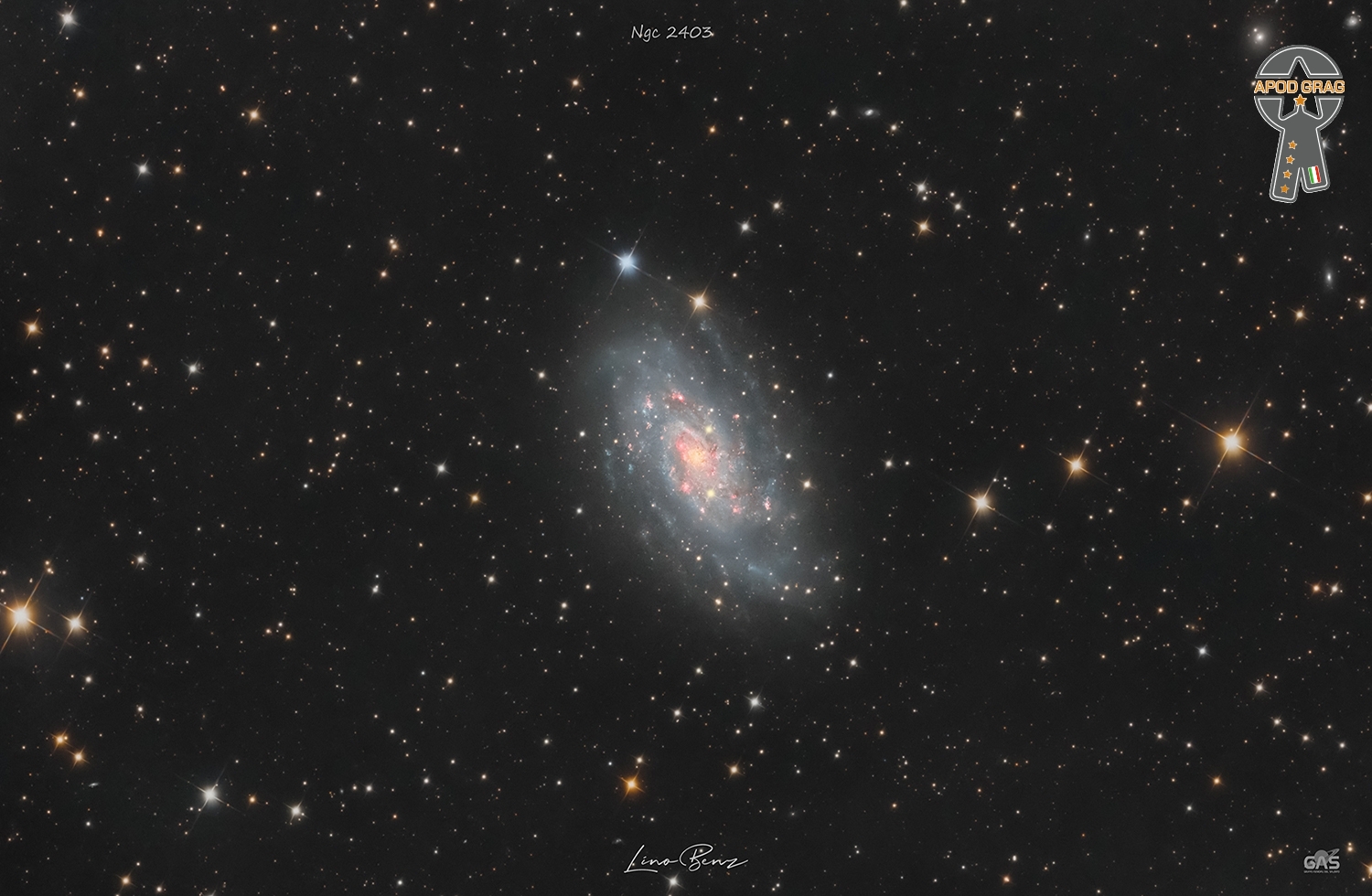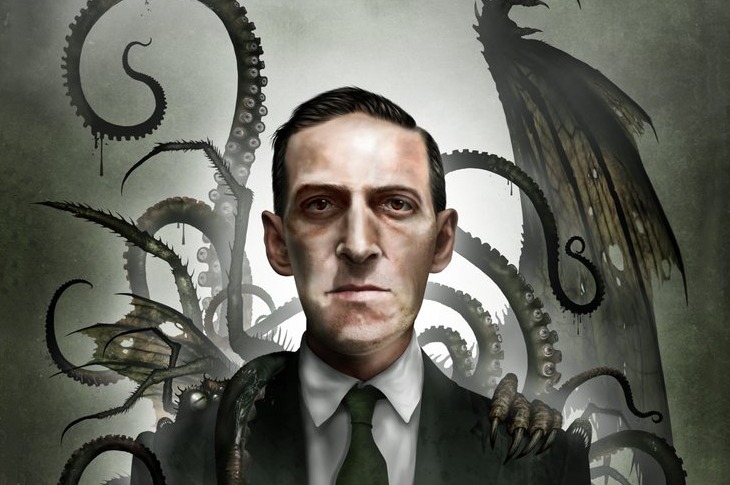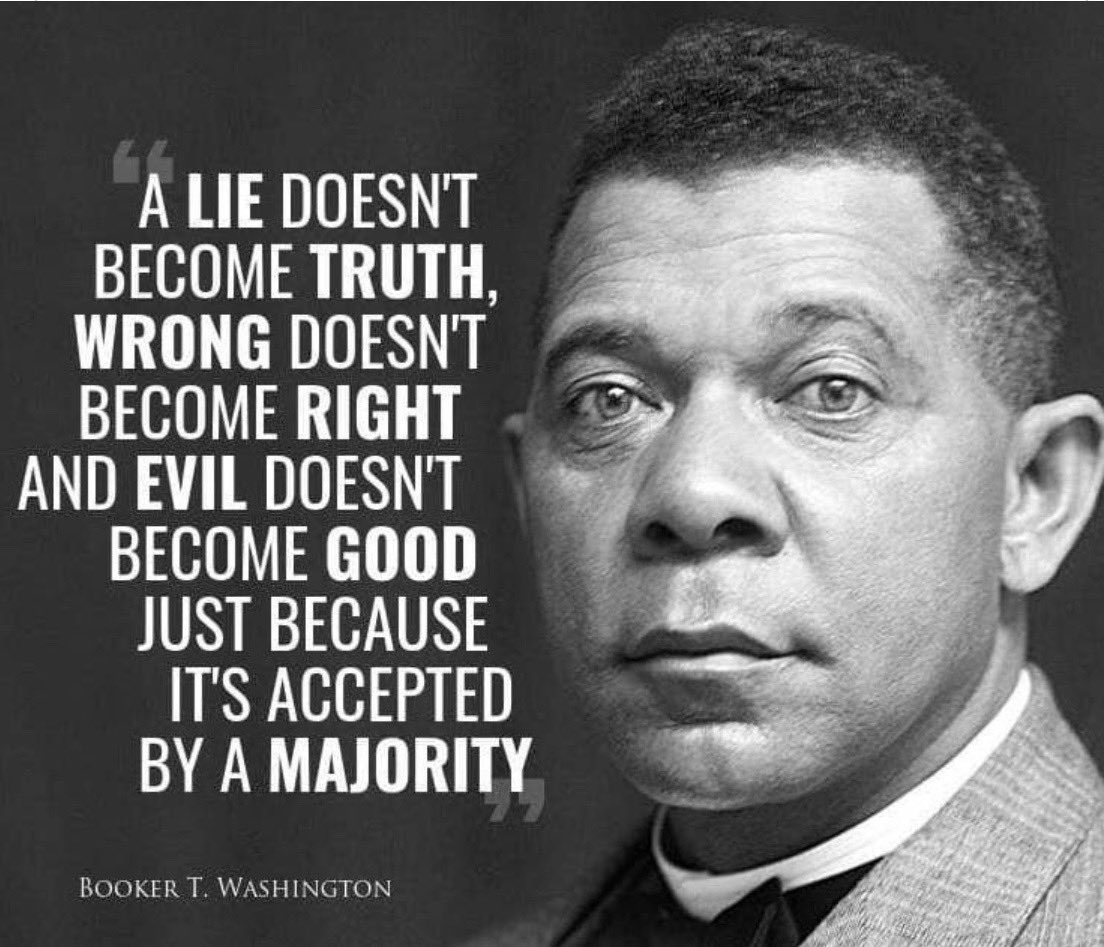Blog
NGC 2403 (also known as Caldwell 7) is an intermediate spiral galaxy in the constellation Camelopardalis. It is an outlying member of the M81 Group, and is approximately 8 million light-years distant. It bears a similarity to M33, containing numerous star-forming H II regions, but being a little bit larger at approximately 90,000 light-years in diameter compared to the 61,100 light-year diameter of M33. The northern spiral arm connects it to the star forming region NGC 2404. NGC 2403 can be observed using 10×50 binoculars. NGC 2404 is 940 light-years in diameter, making it one of the largest known H II regions. This H II region represents striking similarity with NGC 604 in M33, both in size and location in galaxy.

Sir Elton Hercules John (born Reginald Kenneth Dwight; 25 March 1947) is a British singer, songwriter and pianist. His music and showmanship have had a significant, lasting impact on the music industry, and his songwriting partnership with lyricist Bernie Taupin is one of the most successful in history. John was the 19th EGOT winner in history. He has sold over 300 million records worldwide, making him one of the best-selling music artists of all time.
John learned to play piano at an early age, winning a scholarship to the Royal Academy of Music. In the 1960s, he formed the blues band Bluesology, wrote songs for other artists alongside Taupin, and worked as a session musician, before releasing his debut album, Empty Sky (1969). Throughout the next six decades, John cemented his status as a cultural icon with 32 studio albums, including Honky Château (1972), Goodbye Yellow Brick Road (1973), Rock of the Westies (1975), Sleeping with the Past (1989), The One (1992), Songs from the West Coast (2001), The Diving Board (2013) and The Lockdown Sessions (2021). His catalog of hit singles includes “Your Song“, “Tiny Dancer“, “Rocket Man“, “Crocodile Rock“, “Bennie and the Jets“, “Don’t Go Breaking My Heart“, “I’m Still Standing“, “Sacrifice“, “Can You Feel the Love Tonight” and “Cold Heart“. He has also had success in musical films and theatre, composing music for The Lion King (1994), Aida (2000), and Billy Elliot the Musical (2005). John’s final tour, Farewell Yellow Brick Road (2018–2023), became the highest-grossing tour ever at the time. His life and career were dramatised in the 2019 biopic Rocketman.
John is an HIV/AIDS charity fundraiser and has been involved in the fight against AIDS since the late 1980s. He established the Elton John AIDS Foundation in 1992, which has raised over £300 million since its inception, and a year later he began hosting his annual AIDS Foundation Academy Awards Party, which has since become one of the biggest high-profile Oscar parties in the Hollywood film industry. John was the chairman and director of Watford Football Club from 1976 to 1987, and again from 1997 to 2002, and is an honorary life president of the club. From the late 1970s to the late 1980s, John developed a severe addiction to drugs and alcohol, but has been clean and sober since 1990. In 2005, he entered a civil partnership with his long-term partner, the Canadian filmmaker David Furnish. They married in 2014, when same-sex marriage was legalised in England and Wales.
John has had more than fifty top-40 hits on the UK Singles Chart and US Billboard Hot 100, including nine number ones in both countries, as well as seven consecutive number-one albums in the US. He is the most successful solo artist in the history of the US Billboard charts. His tribute single to Diana, Princess of Wales, “Candle in the Wind 1997“, a rewritten version of his 1974 single, sold over 33 million copies worldwide and is the best-selling chart single of all time. In 2021, he became the first solo artist with UK top 10 singles across six decades.[19][20][21] John’s awardsinclude an Primetime Emmy Award, five Grammy Awards, two Academy Awards, a Tony Award, two Golden Globe Awards, a Laurence Olivier Award, and the Kennedy Center Honor. He was inducted into the Songwriters Hall of Fame in 1992 and the Rock and Roll Hall of Fame in 1994, and is a fellow of The Ivors Academy. He was appointed Knight Bachelor for services to music and charity in 1998 and was appointed a member of the Order of the Companions of Honour in 2020.
more...Béla Viktor János Bartók (25 March 1881 – 26 September 1945) was a Hungarian composer, pianist and ethnomusicologist. He is considered one of the most important composers of the 20th century; he and Franz Liszt are regarded as Hungary’s greatest composers. Through his collection and analytical study of folk music, he was one of the founders of comparative musicology, which later became known as ethnomusicology.
more...Aretha Louise Franklin (March 25, 1942 – August 16, 2018) was an American singer, songwriter and pianist. Honored as the “Queen of Soul“, she was twice named by Rolling Stone magazine as the greatest singer of all time.
As a child, Franklin was noticed for her gospel singing at New Bethel Baptist Church in Detroit, Michigan, where her father C. L. Franklin was a minister. At the age of 18, she was signed as a recording artist for Columbia Records. While her career did not immediately flourish, Franklin found acclaim and commercial success once she signed with Atlantic Records in 1966. She recorded albums such as I Never Loved a Man the Way I Love You (1967), Lady Soul (1968), Spirit in the Dark (1970), Young, Gifted and Black (1972), Amazing Grace (1972), and Sparkle (1976), before experiencing problems with the record company. Franklin left Atlantic in 1979 and signed with Arista Records. Her success continued with the albums Jump to It (1982), Who’s Zoomin’ Who? (1985), Aretha (1986) and A Rose Is Still a Rose (1998).
Franklin is one of the best-selling music artists, with more than 75 million records sold worldwide. She charted 112 singles on the US Billboard charts, including 73 Hot 100entries, 17 top-ten pop singles, 96 R&B entries and 20 number-one R&B singles. Her best-known hits include “I Never Loved a Man (The Way I Love You)” (1967), “Respect” (1967), “(You Make Me Feel Like) A Natural Woman” (1967), “Chain of Fools” (1967), “Ain’t No Way” (1968), “Think” (1968), “I Say a Little Prayer” (1968), “Call Me” (1970), “Don’t Play That Song (You Lied)” (1970), “Spanish Harlem” (1971), “Rock Steady” (1971), “Day Dreaming” (1972), “Until You Come Back to Me (That’s What I’m Gonna Do)” (1973), “Something He Can Feel” (1976), “Jump to It” (1982), “Freeway of Love” (1985), “Who’s Zoomin’ Who” (1985), “I Knew You Were Waiting (For Me)” (a duet with George Michael, 1987) and “A Rose Is Still a Rose” (1998). She also made a featured appearance in the 1980 musical-comedy film The Blues Brothers.
Franklin received numerous honors throughout her career. She won 18 Grammy Awards out of 44 nominations, including the first eight awards given for Best Female R&B Vocal Performance (1968–1975), as well as a Grammy Living Legend Award and Lifetime Achievement Award. She was also awarded the National Medal of Arts and the Presidential Medal of Freedom. In 1987, she became the first female artist to be inducted into the Rock and Roll Hall of Fame. Her other inductions include the UK Music Hall of Fame in 2005, the Gospel Music Hall of Fame in 2012,[9] and posthumously the National Women’s Hall of Fame in 2020. In 2019, the Pulitzer Prize jury awarded her a posthumous special citation “for her indelible contribution to American music and culture for more than five decades”.
more...Stephen Paul Motian (March 25, 1931 – November 22, 2011 Philedelphia) was an American jazz drummer, percussionist, and composer of Armenian descent. He played an important role in freeing jazz drummers from strict time-keeping duties.
Motian first came to prominence in the late 1950s in the piano trio of Bill Evans and later was a regular in pianist Keith Jarrett‘s band for about a decade (c. 1967–1976). The drummer began his career as a bandleader in the early 1970s. Perhaps his two most notable groups were a longstanding trio with guitarist Bill Frisell and saxophonist Joe Lovano as well as the Electric Bebop Band, in which he worked mostly with younger musicians on interpretations of bebop standards.
more...Cecil Percival Taylor (March 25, 1929 – April 5, 2018 NY) was an American pianist and poet.
Taylor was classically trained and was one of the pioneers of free jazz. His music is characterized by an energetic, physical approach, resulting in complex improvisationoften involving tone clusters and intricate polyrhythms. His technique has been compared to percussion. Referring to the number of keys on a standard piano, Val Wilmer used the phrase “eighty-eight tuned drums” to describe Taylor’s style. He has been referred to as “Art Tatum with contemporary-classical leanings”.
more...
The subject of today’s NASA/ESA Hubble Space Telescope Picture of the Week is the stunning spiral galaxy NGC 5530. NGC 5530 is situated 40 million light-years away in the constellation Lupus (The Wolf). This galaxy is classified as a ‘flocculent’ spiral, meaning that its spiral arms are patchy and indistinct.
While some galaxies have extraordinarily bright centres where they host a feasting supermassive black hole, the bright source near the centre of NGC 5530 is not an active black hole but instead a star within our own galaxy, only 10 thousand light-years from Earth. This chance alignment gives the appearance that the star is at the dense heart of NGC 5530.
If you had pointed a backyard telescope at NGC 5530 on the evening of 13 September 2007, you would have seen another bright point of light adorning the galaxy. That night, Australian amateur astronomer Robert Evans discovered a supernova, named SN 2007IT, by comparing NGC 5530’s appearance through the telescope to a reference photo of the galaxy. While it’s remarkable to discover even one supernova using this painstaking method, Evans has in fact discovered more than 40 supernovae this way! This particular discovery was truly serendipitous: it’s likely that the light from the supernova had completed its 40-million-year journey to Earth just days before the explosion was discovered.
[Image Description: A spiral galaxy, seen tilted at a slight angle, on a dark background of space. It glows softly from its centre, throughout its disc out to the edge. The disc is a broad swirl of webs of dark reddish dust and sparkling blue patches where stars have formed. Atop the centre of the galaxy there is a star that appears very large and bright with four spikes emanating from it, because it is relatively close to Earth.]

Lee Oskar (born 24 March 1948) is a Danish harmonica player, notable for his contributions to the sound of the rock-funk fusion group War, which was formed by Howard E. Scott and Harold Brown, his solo work, and as a harmonica manufacturer. He continues to play with 3 other original War band members, Harold Brown, Howard Scott and B.B. Dickerson, under the name LowRider Band.
more...Paul Brownlee McCandless Jr. (born March 24, 1947 Indiana, PA) is an American multi-instrumentalist and founding member of the American jazz group Oregon. He is one of the few jazz oboists. He also plays bass clarinet, English horn, flute, penny whistle, tenor saxophone, sopranino saxophone, and soprano saxophone.
more...Boogie Bill Webb (March 24, 1924 – August 22, 1990 NOLA) was an American Louisiana blues and rhythm-and-blues guitarist, singer and songwriter. His music combined Mississippi country blues with New Orleans R&B.[1] His best-known recordings are “Bad Dog” and “Drinkin’ and Stinkin'”. Despite a lengthy (albeit intermittent) career, Webb released only one album.
more...Carol Kaye (
born March 24, 1935) is an American musician. She is one of the most prolific recorded bass guitarists in rock and pop music, playing on an estimated 10,000 recordings in a career spanning over 65 years.
Kaye began playing guitar in her early teens and after some time as a guitar teacher, began to perform regularly on the Los Angeles jazz and big band circuit. She started session work in 1957, and through a connection at Gold Star Studios began working for producers Phil Spector and Brian Wilson. After a bassist failed to turn up to a session in 1963, she switched to that instrument, quickly making a name for herself as one of the most in-demand session players of the 1960s, playing on numerous hits. She moved into playing on film soundtracks in the late 1960s, particularly for Quincy Jones and Lalo Schifrin, and began to release a series of tutoring books such as How To Play The Electric Bass. Kaye became less active towards the end of the 1970s, but has continued her career and attracted praise from other musicians.
During the peak of her years of session work, Kaye became part of a stable of Los Angeles–based musicians known as The Wrecking Crew. She appeared in the 2008 documentary The Wrecking Crew. Kaye was the sole regular female member of the Wrecking Crew (though she has said the collective were never known by this name, which was later invented by Hal Blaine), a collective of studio musicians who played on a large number of hit records from Los Angeles in the 1960s. Throughout the decade, while at the time unknown to the public, Kaye played bass on a substantial number of records that appeared on the Billboard Hot 100. According to the New York Times, she played on 10,000 recording sessions. She appeared on sessions by Frank Sinatra, Simon & Garfunkel, Stevie Wonder, Barbra Streisand, The Supremes, The Temptations, the Four Tops and The Monkees. She played electric bass on Nancy Sinatra‘s “These Boots Are Made for Walkin’“, while Chuck Berghofer played double bass. She also came up with the introduction on fellow session player Glen Campbell’s hit “Wichita Lineman“. Kaye later said that during the 1960s, she would sometimes play three or four sessions per day, and was pleased that so many of them created hit records.
more...
Georg Philipp Telemann (24 March [O.S.14 March] 1681 – 25 June 1767) was a German Baroque composer and multi-instrumentalist. He is one of the most prolific composers in history, at least in terms of surviving oeuvre. Telemann was considered by his contemporaries to be one of the leading German composers of the time, and he was compared favourably both to his friend Johann Sebastian Bach, who made Telemann the godfather and namesake of his son Carl Philipp Emanuel, and to George Frideric Handel, whom Telemann also knew personally.
Almost completely self-taught in music, he became a composer against his family’s wishes. After studying in Magdeburg, Zellerfeld, and Hildesheim, Telemann entered the University of Leipzig to study law, but eventually settled on a career in music. He held important positions in Leipzig, Sorau, Eisenach, and Frankfurt before settling in Hamburg in 1721, where he became musical director of that city’s five main churches. While Telemann’s career prospered, his personal life was always troubled: his first wife died less than two years after their marriage, and his second wife had extramarital affairs and accumulated a large gambling debt before leaving him. As part of his duties, he wrote a considerable amount of music for educating organists under his direction. This includes 48 chorale preludes and 20 small fugues (modal fugues) to accompany his chorale harmonisations for 500 hymns. His music incorporates French, Italian, and German national styles, and he was at times even influenced by Polish popular music. He remained at the forefront of all new musical tendencies, and his music stands as an important link between the late Baroque and early Classical styles. The Telemann Museum in Hamburg is dedicated to him.
more...More Posts
- Lee Scratch Perry Day
- Harold Mabern Day
- Maxwell Street Jimmy Davis Day
- Marian McPartland Day
- Flamenco Fridays with José Menese y Enrique de Melchor
- Daily Roots with Ras Midas
- The Cosmos with M13
- Lem Winchester Day
- Lennie Tristano Day
- Buster Harding Day
- Curly Russell Day
- World Music with the SILKROAD Ensemble
- Daily Roots with Messenjah
- Boiling Red Cedar
- Smudging Our Homes
- The Cosmos with the Orion Bar M42
- Andy Narell Day
- Bill Frisell Day
- Big Daddy Kinsey Day
- Wilson Pickett Day


